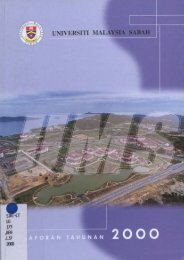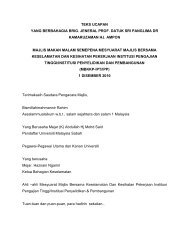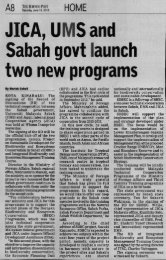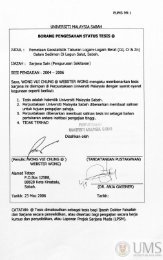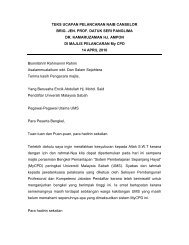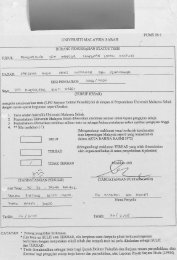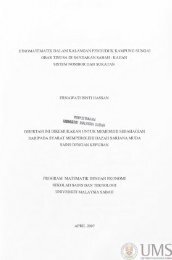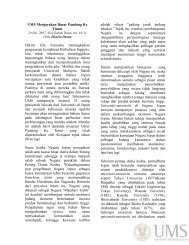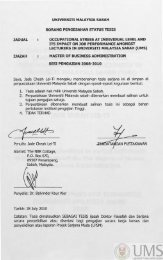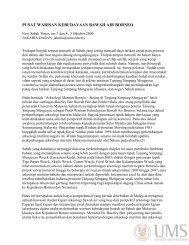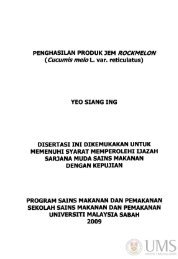ANG GUAN HOE - UMS - Universiti Malaysia Sabah
ANG GUAN HOE - UMS - Universiti Malaysia Sabah
ANG GUAN HOE - UMS - Universiti Malaysia Sabah
You also want an ePaper? Increase the reach of your titles
YUMPU automatically turns print PDFs into web optimized ePapers that Google loves.
%i<br />
ABSTRACT<br />
DEVELOPMENT OF SOY BEAN GINGER BISCUIT<br />
This research was conducted<br />
to study the most suitable combination<br />
between soy bean waste and ginger waste to produce soy bean ginger<br />
biscuit. Ranking tests and Hedonic tests were conducted on a total of 12<br />
formulations and Formulation 8 was chosen as the best formulation.<br />
This formulation contains 37.0% wheat flour, 12.0% soy bean, 9.0%<br />
ginger, 24 0% sugar, 0.5% salt, 17.0% margarine<br />
and 0.5% sodium<br />
bicarbonate. The proximate analysis showed that soy bean ginger<br />
biscuit had 4.62 ± 0.04% moisture, 9.40 ± 0.06% protein. 18.51 ± 0.46%<br />
fat, 1.40 ± 0.09% fiber. 1.41 ± 0.09% ash and 64 66 ± 0.37%<br />
carbohydrate.<br />
The storage quality was studied for 10 weeks based on<br />
physicochemical tests, microbiological tests, determination of active<br />
compound and sensory tests. Physicochemical<br />
tests showed that there<br />
is a slight increase of moisture content and free fatty acid in the biscuit<br />
from 4.62 ± 0.04% to 5.90 ± 0.13% and 0.72±0.01% to 0.95±0.01%<br />
respectively from beginning to the end of storage stage. Microbiological<br />
tests show that it is safe to consume the biscuit with 2.5 x 102 cfu/g in<br />
the initial stage of storage and 3.0 x 102 cfu/g for the end of the storage<br />
stage. Active component,<br />
gingerol was obtained with the RF value of<br />
0.24. The results of sensory evaluation after storage showed that there<br />
were no significant (pz0.05) changes with the fresh sample..



